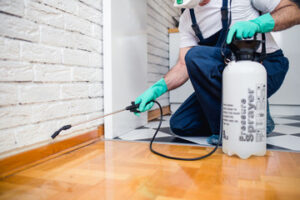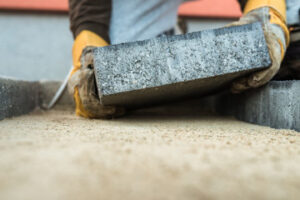Painting New Drywall is relatively straightforward if the proper steps are followed, whether for a home remodel, new construction, or to spruce up an interior space. It’s also important to use quality paint for long-lasting results.
The wrong paint or primer can result in poor adhesion, uneven surfaces, and a less attractive finish.

Sanding new drywall before painting helps ensure that the paper face is smooth and free of dust. This can be a tedious process, but it should not be overlooked. A good sanding job can elevate the overall look of a room and make your paint job look professional.
To sand drywall, you will need a hand sander fitted with 150-grit or finer sandpaper and a sanding sponge for corners and detail work. You will also want to invest in a double-strap dust mask rated for nuisance dust and goggles to protect your eyes.
If you are not comfortable doing the sanding yourself, you can hire a professional drywall contractor to do it for you. However, this is a costly option and can take longer to complete the project than if you did it yourself.
The sanding process generates a lot of dust, so it is important to prepare the room for this. Ventilate the room as much as possible, and cover furniture with a drop cloth or plastic sheeting to keep dust from escaping the area into other parts of the house.
When sanding, be sure to use light pressure and pay special attention to the edges of seams and around fasteners. Doing so will help to prevent the edges from “fuzzing,” which can make the seams more visible after painting. In addition, be sure to feather the sanding inward around electrical boxes and other wall fixtures, as they may have sharp edges that could rip your sandpaper or tear off the drywall.
After sanding, inspect the walls and ceilings to identify any problem areas that need additional work. For example, if you noticed that you sank a screw too deep into the drywall and it has left a gouge or scratch, touch up those areas with more joint compound and sand again once it is dry.
Remember that if you try to skip the sanding step, you will likely have to redo all of the mudding and taping, which is much more time-consuming and expensive than simply doing it right the first time. This is why it’s often a good idea to enlist the services of a professional drywall contractor for larger jobs.
Dusting
Drywall installation and finishing can generate a lot of dust, even with proper precautions. This dust is light but omnipresent, and it can easily sneak into every corner of the room. Fortunately, a few simple cleaning steps can help prevent it from lingering and interfering with your paint job.
First, sweeping up the loose particles is crucial to prevent them from swirling around and irritating your eyes, nose, throat, and lungs. A vacuum cleaner with a wide or brush nozzle, preferably one that can be used in the closed spaces of your building, should be used to remove the majority of the debris. This should be done in the area where you’re working, while wearing a dust mask to protect against silica and other occupational hazards.
Next, a damp cloth or cleaning wipes should be used to gently clean the surfaces of the new drywall. Be careful not to saturate the fabric, as too much moisture can damage drywall and lead to mold growth. The drywall should then be dried thoroughly before painting.
If you skip this step, your paint job will likely suffer. Primers need to adhere to the surface of the drywall, and any dust will interfere with this. This can cause a poor-quality finish, resulting in flaking or peeling later on.
Whether or not you should clean drywall before primer also depends on the type of primer being used. Some high-quality primers are designed to adhere well to slightly dirty surfaces, but it’s generally best to start with a clean canvas for the best results.
If you’re not comfortable performing the cleanup yourself, or if your project is large enough to justify it, consider hiring a professional. A pro can handle the sanding and mudding processes for you, while still giving your walls that finished look once they’re ready to be painted. This will reduce the amount of time you spend worrying about the mess and allow you to focus on getting your paint job right the first time.
Primer
After light sanding for an even surface and removing any dust from the wall, it’s time to apply a coat of primer. Primer is a base coat layer that’s designed to improve paint application, block some stains and provide a better base for topcoats. There are a few different types of primers to choose from, and the one you select will depend on your painting environment and the type of finish you’re looking for.
Some primers are formulated to hide stains on the wall, while others are specifically suited for new drywall. Choosing the right primer for your project will help ensure that your finished product is high quality and attractive.
A quality drywall primer will also seal the surface, creating a smooth base coat that will be easier to paint. Most drywall primers are water-based, which makes them safer to use around the home than oil-based alternatives. They’re also quick to dry, making them an excellent choice for projects that need to be completed quickly.
If you are working in a damp area, like a bathroom, you may need a waterproof primer that can resist moisture and mildew growth. You can find waterproof drywall primers online or at your local hardware store.
Before you begin applying your drywall primer, be sure to read the label carefully and follow the manufacturer’s instructions for application. Typically, you’ll apply several thin coats and wait for each to dry before applying the next. A little patience will help you achieve a beautiful, professional-looking result.
If you’re looking for a primer that will be great for new drywall, consider Zinsser Bulls Eye 1-2-3. This water-based primer is versatile and suitable for a variety of surfaces. It promotes adhesion, blocks stains, and dries quickly to save you time. It’s also easy to sand and can be used with a wide range of paint colors. It’s ideal for a new drywall project and is available in a gray shade that helps maximize paint coverage. This primer is also odorless and contains no VOCs, which means it won’t be harmful to the environment.
Paint
A professional-looking paint job on a new drywall surface requires careful preparation. Inspecting the walls for unsightly dings and grooves, filling them in with a drywall compound, sanding the wall once again, cleaning it and then applying a high-quality primer before painting is the way to go. Doing so ensures that the finished product will look great and provide long-lasting protection for your walls.
Taking the time to carefully prepare new drywall will help you avoid many common mistakes, such as using too much paint, not waiting for it to dry between coats, and choosing the wrong type of primer or paint for the job. These mistakes can lead to bubbling, peeling and mildew growth of the paint surface.
The right drywall primer is critical because it will help seal the surface and enhance paint adhesion. It is also important to choose a quality paint that is specifically formulated for new drywall. This type of paint is often more expensive, but it provides superior coverage and a longer-lasting finish.
It is generally recommended to apply two coats of paint on new drywall, not including the primer layer. It takes at least 24 hours to give the first coat of paint a chance to fully dry, so be patient. After the first coat dries, it should be lightly sanded with 150-grit sandpaper to help with a smooth and uniform finish.
Once the second coat of paint has dried, it should be lightly sanded again with 150-grit sandpaper and then cleaned once more with a damp cloth. A third and final coat of paint should then be applied.
When painting drywall, it is always best to use a brush for small areas and a roller for larger areas. A lint-free brush with tapered bristles is best for getting into corners and around trim work, while a roller with a 1/2-inch or 3/8-inch nap is ideal to minimize roller marks. It is also a good idea to paint in a well-lit area, bringing in work lights if necessary. Then, clean up your tools, remove any drop cloths and replace the furniture you removed from the room.



